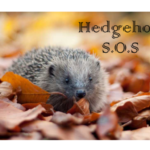Are zoos an important form of convservation? – Olivia Gowland
In modern-day society, animal conservation is a familiar topic to discuss as over the past
30 years, the numbers of marine, terrestrial and freshwater species have seen a significant
decrease in population. However, whether zoos are the most suitable place to conserve
endangered species and nurture them to be re-introduced into the wild has triggered
extensive debate. Some people believe zoos are inhumane and don’t provide the
biodiversity and habitat they thrive upon in the wild whereas others look upon the
perspective that zoos are pivotal institutions for conservation, education and
entertainment. This essay will demonstrate the notion that zoos are important institutions
for conserving wildlife and educating humans on the effect they are having on the natural
world.
Before visiting Colchester Zoo, I researched five endangered species: the Humboldt
Penguin, the Ring tailed Lemur, the African Elephant, the African Lion and the Slendersnouted
crocodile in order to understand what part zoos needed to play in the conservation process. The primary threats to these animals are poaching for ivory or skins habitat destruction and climate change. These are all monitored by the International Union for Conservation of Nature (IUCN) red list which classes the severity of their population decrease under: vulnerable, endangered, critically endangered, extinct in the wild and extinct. I was able to find out at the zoo that the three main reasons for any species becoming endangered are habitat loss, over use and pollution which creates the acronym HOP. This is accelerating the process of extinction which other wise would be a completely natural process.
The concept of zoos began during the Egyptian era. They liked to keep wild animals, from
gardens with a few waterfowl to zoos with giraffes ,elephants even bears. The exotic animals were brought to Egypt on official trading expeditions . This indicated power and wealth. During this time zoos were called menageries. Then, during the Ancient Romanperiod, human became fascinated with wild animals. They liked looking at them, marvellingat their ‘strangeness’ and watching them perform tricks similar to what we want to get out of zoos today. However they also took pleasure in watching them being hunted and killed. There were actually no zoos in Ancient Rome but the Colosseum was used as a cross between a zoo and a circus. Species were used for shows and some were kept by the
wealthy for their own entertainment. Evidence from writings show that monkeys would be dressed as soldiers and would ride in small chariots pulled by goats. Overall the elephant was the real symbol of power and success of its Emperors. Zoos continued to become popular and in the 11th century William the Conqueror established a royal menagerie. This included lions and camels as a symbol of power. The tradition continued through hissuccessors who began to receive exotic animals from foreign rulers. Once again, these were used for entertainment. In the 16th century animals were then put on show to the public in the Tower of London, some of these animals were given as gifts. Eventually,admission was three pennies or if you couldn’t pay, kittens could have been given to feed
the lions. Now, zoos are still popular attractions however many may choose to stay in the
comfort of their homes and watch nature documentaries.
A zoos main role is to provide breeding and re-introduction programmes for animals
facing the consequences of human impact. In addition to this they also provide a base for
education, research, recreation and conservation. Research carried out in zoos can be
vital for new discoveries and the safety of animals. An example of this would be a health
check carried out on an Amur Leopard. When it was under the anaesthetic a heart murmur
was discovered. This could have been due to the anaesthetic but it turned out to be
natural. To reveal this the leopard was trained to let a stethoscope take its heart beat while
it was conscious without zoos we may not know this. Zoos endeavour to restore a
sustainable population of endangered species through their re-introduction programme
which unfortunately can take up to 100 years, are very expensive and rarely succeed. In
addition to that, a suitable habitat must be found in order to keep the species safe.Due to
some of their past attempts not going to plan, they make sure every detail is recorded so
mistakes can be learned from and improved upon. Once the animals have been reintroduced
into the wild they must slowly be weened off human contact. Previously they would have been accustomed to humans killing and giving them their food and they would not have been exposed to the threats of the wild such as predators. A positive thing will be that animals will have plenty of space to roam freely which is a prevailing concern in zoos. Many disagree with the size of the enclosures however the enclosure size is based on either farm animals, other zoos or how far they would need to travel to get food in their natural habitat. In the wild, animals would be able to roam freely and many, like cheetahs, would normally travel milesto hunt their own food or escape predators. To contribute to the breeding programme, each species are split into Bachelor and Bachelorette groups for purposes of space and to prevent inbreeding. To help each individual zoo with these processes BIAZA, EAZA and WAZA are the associations which work together to ‘strengthen the commitment of the effectiveness of modern zoo and aquarium’. They stand for :British and Irish Association for Zoos and Aquarium (covering the British Isle and Ireland), the European Association for Zoos and Aquaria (covering Europe and parts of Asia) and the World Association of Zoos and Aquariums which covers everything. Zoos are also very charitable, they set up their own charities like ‘Action for the Wild’, which is run by
Colchester zoo and assists the fight against poaching. Not only this but they also help to
fund other projects purely by the profit and income made from visitors meaning they must
ensure that their zoo is a fun and educational day out for everyone. Overall, zoos become
a last reserve for some species and they are doing all they can to help.
When we visited the zoo I had the opportunity to examine how the five endangered
species I chose (and many more) were being treated. The Humboldt Penguin (which gets
its name from the explorer Alexander con Humboldt) ; the Spheniscus Humbodti ,
originates from South America, Chile and Peru within the reaches of the Humboldt Current.
They nest in islands and rocky coasts and feed in the surrounding waters. This habitat is
influenced by the nutrient rich Peruvian waters. They are a carnivorous animal with a diet
only comprised of marine animals: krill, small crustaceans, shrimp, fish, squid, anchovies and
sardines. Despite this, there are approximately 3,000-12,000 left in the wild and with a decreasing
population, they are listed as vulnerable on the IUCN red list. The population is slowly diminishing because of entanglement with fishing nets, no readily available source of food consequently forcing them to venture into more remote and dangerous areas increasing the risk of being hunted by predators, their under skin fat deposits make an oil suitable for oil lamps, damaged nests as
guano (excrement of seabirds and bats) is being collected for fertiliser, illegal trade for consumption and the list goes on. In the zoo, the penguins had quite a small enclosure with minimal space to swim but with the safety and aid of the zoo, many penguins have been born at the zoo and they currently have breeding pairs. Furthermore, Colchester Zoo’s charity Action for the Wild is also raising funds to
protect the Humboldt Penguins in Peru.
Another endangered specie at Colchester Zoo is the African Elephant which is classed
under the species Loxodonta Africana. They originate from Africa but now there is
approximately 415,000 left in the wild. The African Savannah Elephants are commonly
found in Savanah zones consisting of the 37 countries south of the Sahara and the African
Forest Elephants are found in dense rainforests in west Central Africa. Their diets in the
wild consist of several hundred pounds a day of roots, grasses, fruit and bark however, in
captivity, they are fed grass, hay, straw, branches, fruit, vegetables, bread and water. Many
of these foods are not found in the wild. Humans have had a significant impact to the
severe reduction in the population of African Elephants, this is due to illegal killing for ivory
tusks, habitat destruction and lack of water. On seeing them at the zoo it was clear to see
that the roots and leaves they would normally thrive upon in their natural habitat or at least
a readily available supply, straw and hay could be seen on the ground in the enclosure. In
comparison to the other enclosures the Elephants’ was decidedly larger giving the large
terrestrial animal space to roam around. The photos I took helped highlight the conditions
of modern day zoos and whether or not they are suitable places for animals to be enclosed
and conserved.
In conclusion, I strongly believe that zoos are suitable and beneficial environments to
conserve and nurture animals to be re-introduced into the wild. The main aim of zoos
before were purely for entertainment but now they must play a more pivotal role in order to
shield endangered species from threats in the wild and ensure their population can begin
to see an increase. I hope zoos can continue to be important institutions for conserving
wildlife and educating humans about the effect they are having on the natural world.















Post Comment
You must be logged in to post a comment.